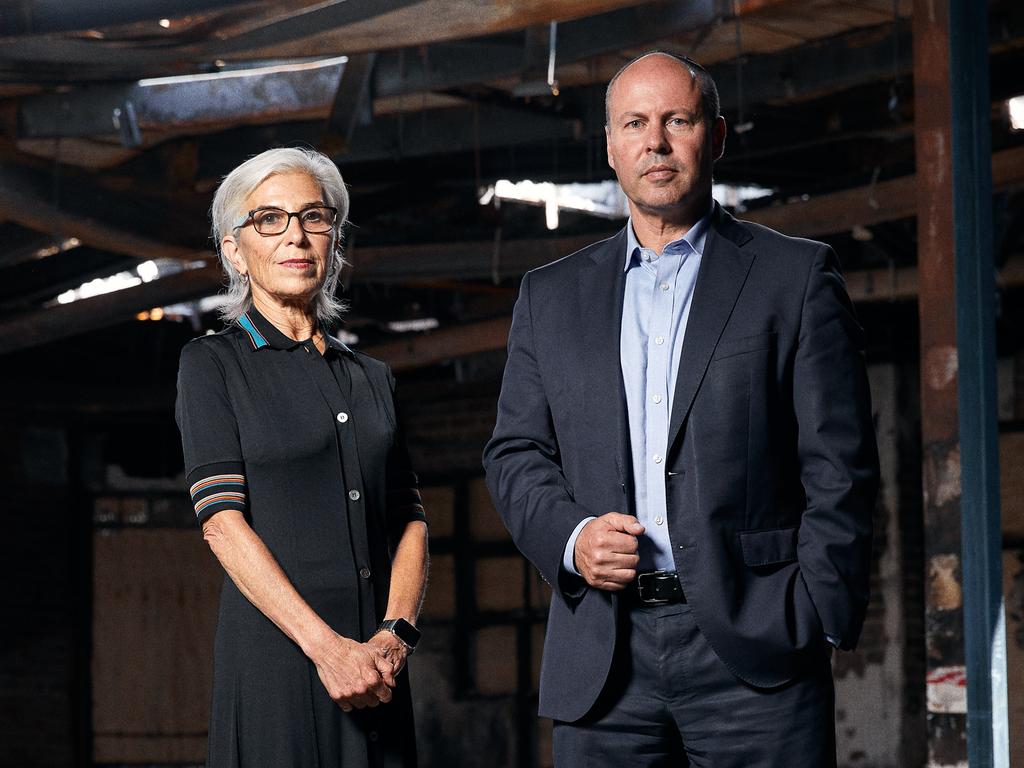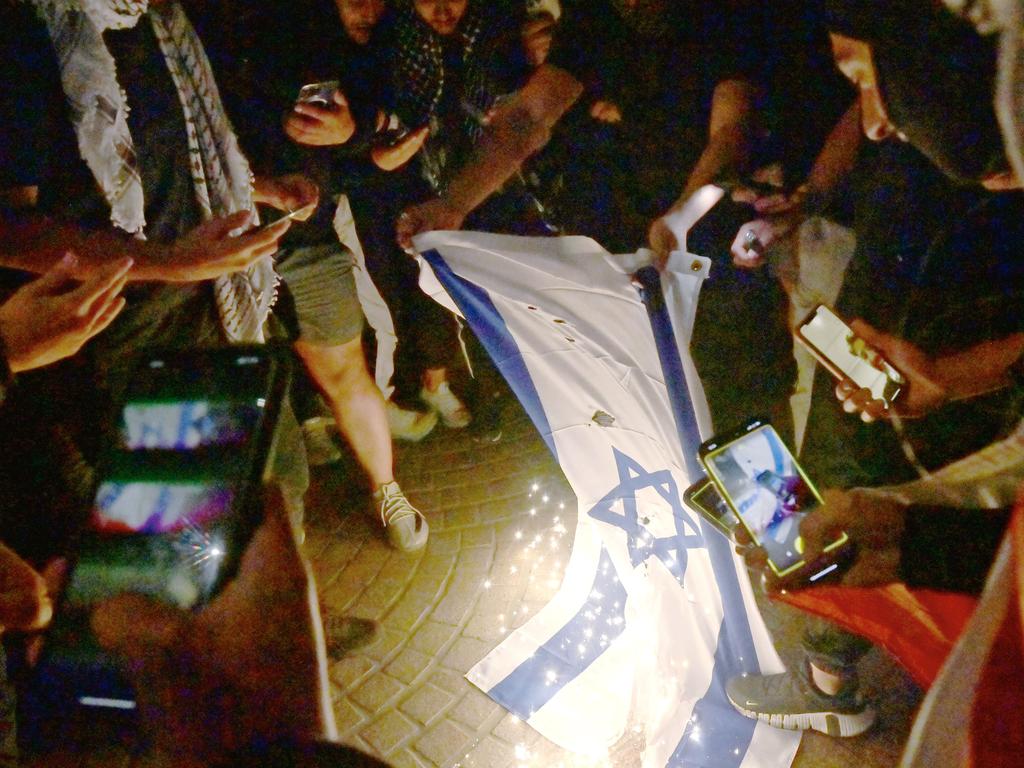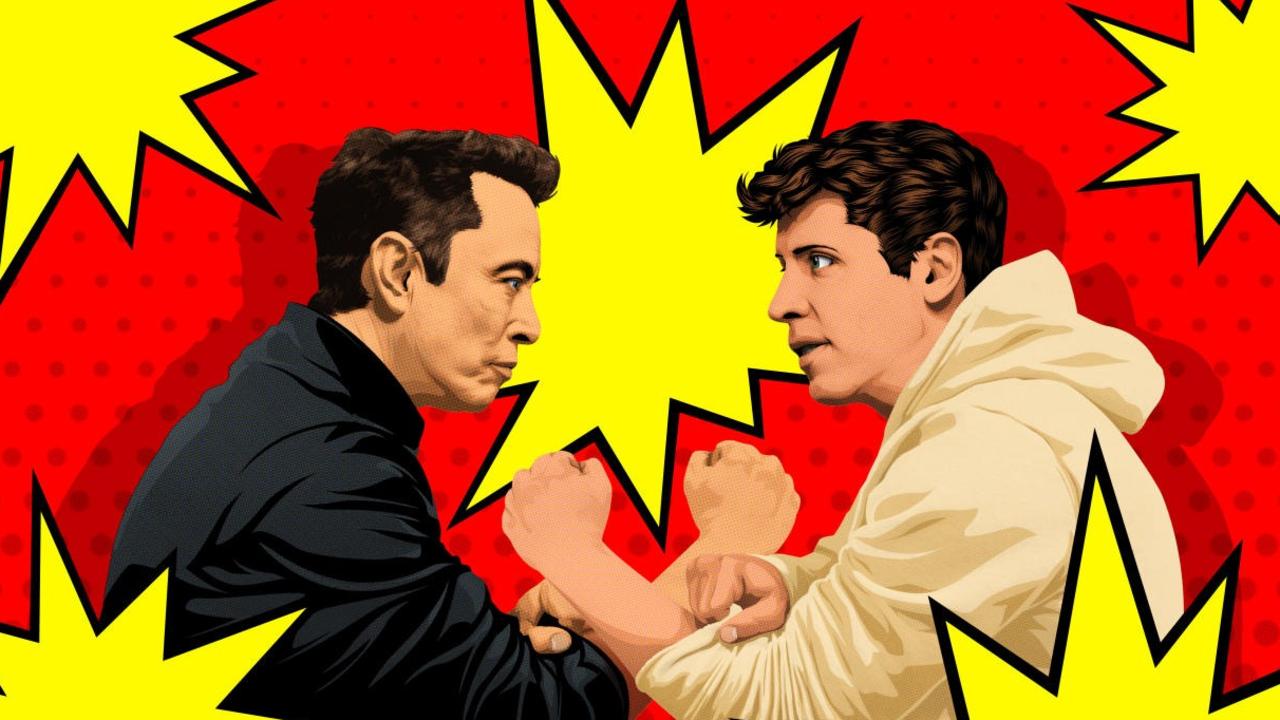Hamas takes a swipe at Donald Trump’s Gaza plan during hostage release
Hamas has released three hostages including the last living American-Israeli civilian held in the Gaza Strip and took a swing at the Trump plan for rebuilding the enclave.
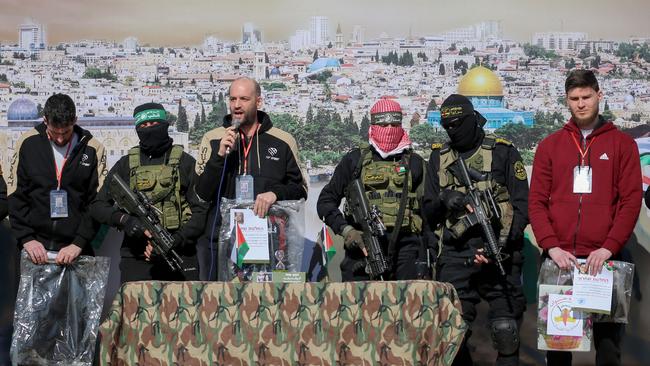
Hamas released three hostages including the last living American-Israeli civilian held in the Gaza Strip and took a swing at President Donald Trump’s plan for rebuilding the enclave on Saturday, in a propaganda-tinged event that was nevertheless calmer than many previous releases.
The release took place in the city of Khan Younis in front of the destroyed home of Yahya Sinwar, the militant group’s late leader who orchestrated the October 7, 2023, attack before being killed by Israel last fall.
On the stage set up for the event, Hamas hung a banner that read, “No migration except to Jerusalem” – an apparent retort to Mr Trump’s proposal for the US to take control of Gaza and redevelop the seaside enclave after removing its inhabitants.
Mr Trump has said neighbouring countries such as Jordan and Egypt should take in the displaced Palestinians while Gaza is rebuilt, an idea that was swiftly rejected by Arab and many Western governments.
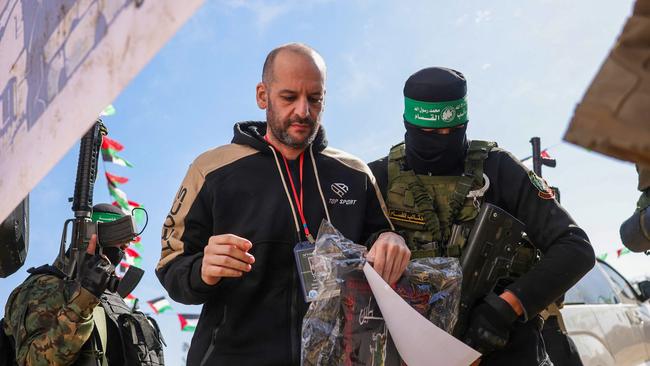
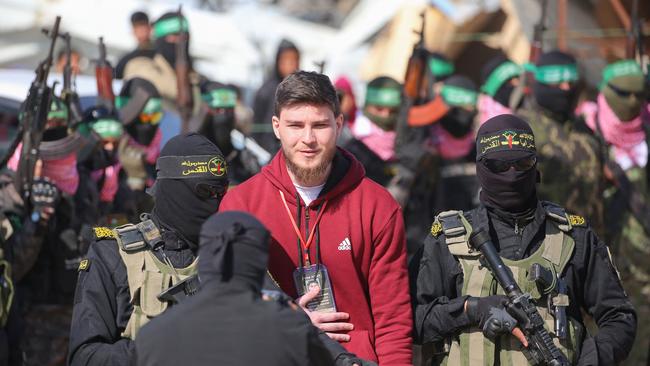
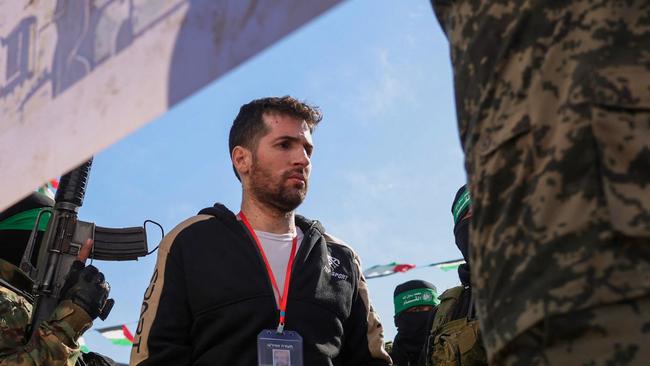
Hamas freed American-Israeli Sagui Dekel Chen, 36, Russian-Israeli Sasha Troufanov, 29, and Argentinian-Israeli Iair Horn, 46, after negotiators resolved a dispute this week over the delivery of humanitarian aid that threatened to derail the group’s shaky ceasefire with Israel.
All three men were forced to speak on stage before they were transferred to the Red Cross and taken back into Israel by the military.
They appeared pale and in some cases thin but in better physical condition than hostages released a week ago. While a large crowd gathered to watch the event, the scene was less chaotic than in some previous hostage releases, episodes that drew complaints from Israel.
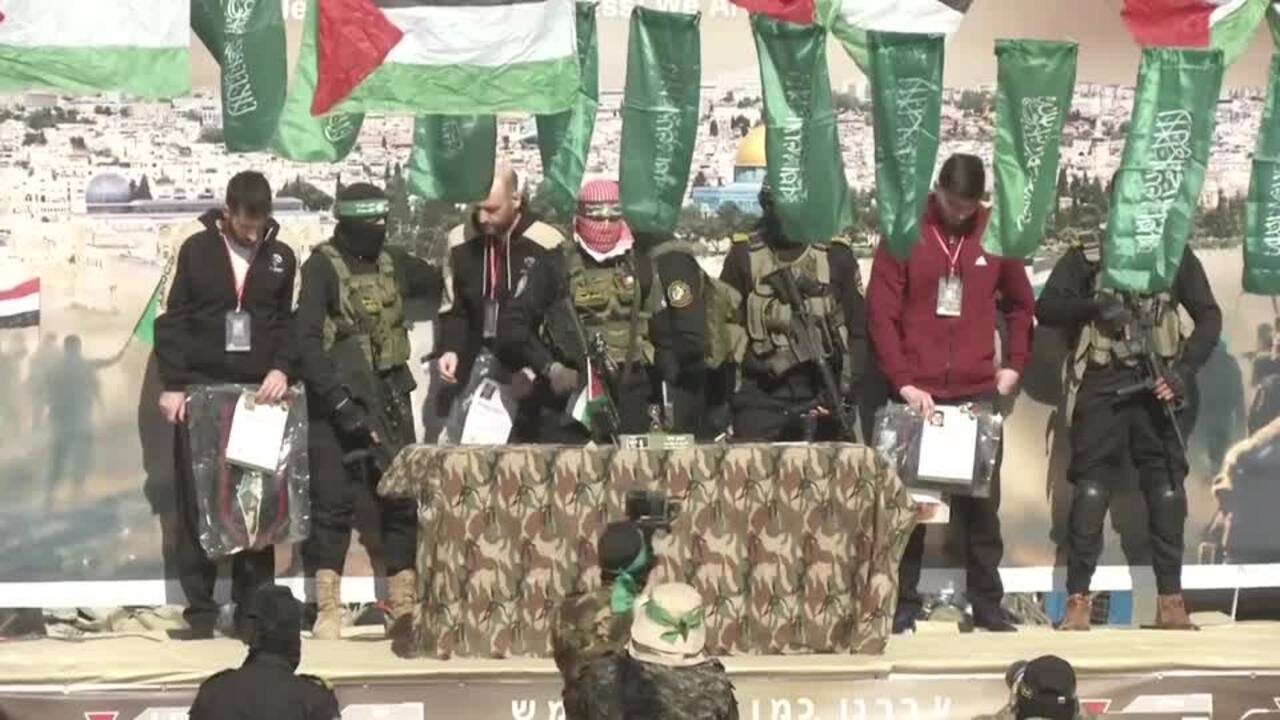
Israel began releasing an expected 369 Palestinian prisoners in exchange, including 36 serving life sentences. One of the highest-profile prisoners set to be released was Ahmed Barghouti, who was convicted of launching suicide bombings and shootings that killed 12 Israelis during the Palestinian uprising in the early 2000s known as the second intifada.
Leading up to the release, another militant group, Islamic Jihad, published a video, which appeared to be staged, showing Mr Troufanov in a tunnel being informed of his release. Another video showed him walking by the beach, where he could be seen fishing and writing a letter thanking his captors for their treatment.
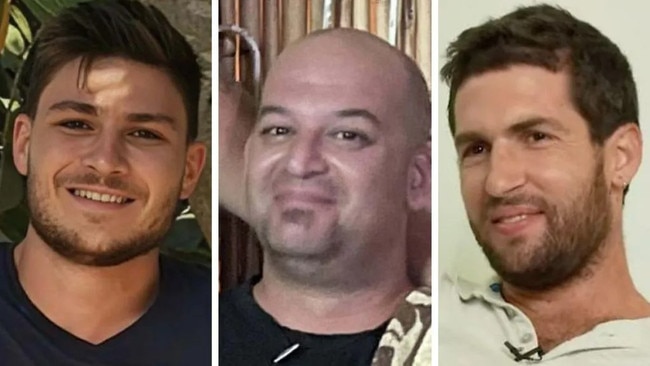
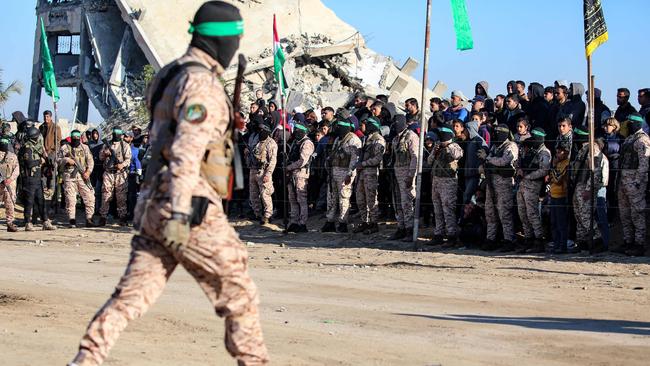
Mr Troufanov, an Amazon employee, was taken from his home along with his grandmother, mother and girlfriend, all of whom were freed in an earlier ceasefire deal in November 2023. Russia had pressured Hamas to release Mr Troufanov early, mediators said. Mr Troufanov’s father, Vitaly, was killed in the Hamas-led attack.
Dekel Chen has three young daughters, the youngest born in December 2023 while he remained in captivity. His father, Jonathan Dekel Chen, who has been lobbying for his return, told The Wall Street Journal late last month that he was waiting to see his granddaughters leap into his son’s arms.
“I’ve been imagining that for almost 500 days now, and that has not changed,” he said.
Mr Horn was kidnapped with his brother, Eitan Horn, who remains in captivity until the second phase of the ceasefire along with others generally thought to be uninjured men younger than 50, who would be released only if Israel and Hamas agree to extend the deal. His father told the Journal that he had run the script of their reunion many times in his head and was ready to help his son’s return to normalcy.
All three hostages released on Saturday were taken on Oct. 7, 2023, from kibbutz Nir Oz, a small community near the Gaza border that was one of the hardest-hit in the attack.
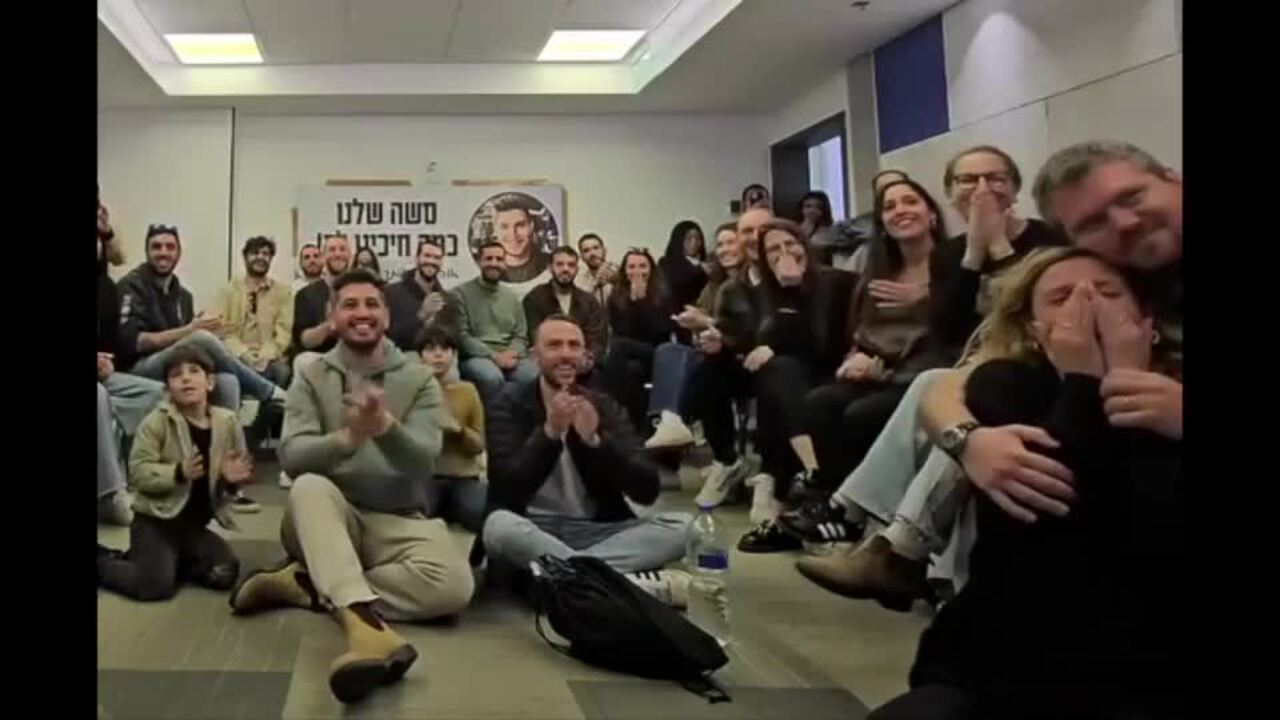
One living American, 21-year-old Edan Alexander, and four bodies of slain American citizens remain in Gaza. As an Israeli soldier, Alexander would only be released as part of the second stage of the ceasefire.
A plaza in Tel Aviv that has become known as Hostage Square filled up with families, friends, soldiers and supporters of the hostages, who gathered in front of a large screen to watch the handover. Some came with their children and dogs, holding posters, waving Israeli flags and joining chants of “Bring them home now!”
At the sixth such exchange since the ceasefire began, emotions are still running high. The crowd clapped and cheered as they caught their first glimpse of the hostages emerging from Hamas’s vehicles. Many wiped tears from their eyes.
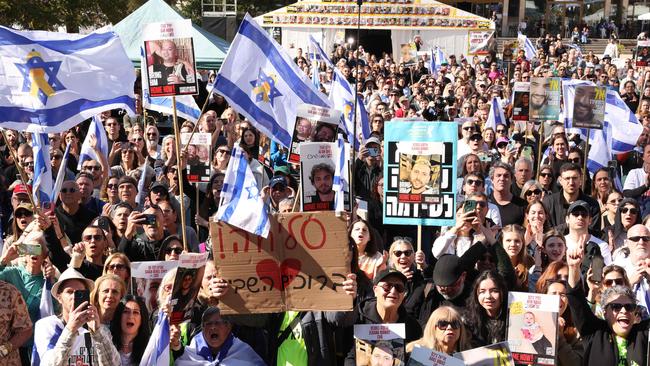
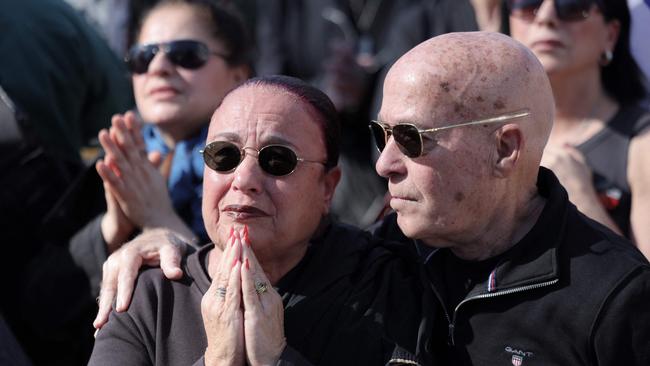
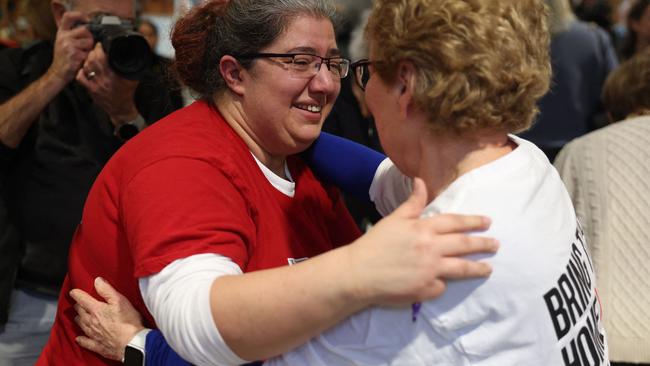
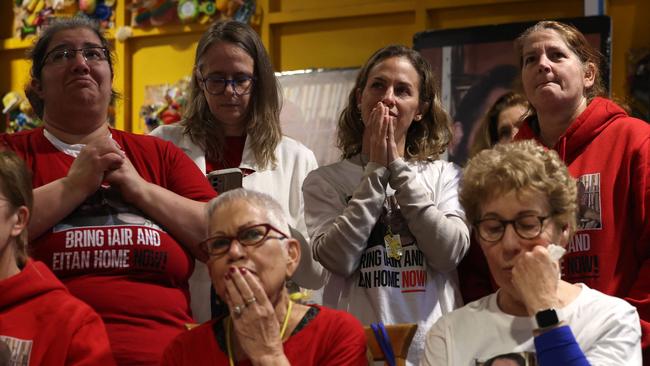
Ann Gil lost three relatives and her best friend in the Oct. 7 attacks. She said she comes to the square each time hostages are released to support those who are still alive. “There’s nothing I can do for my loved ones, they’re not coming back,” she said. “But we will be here waiting for all the others to come home.”
Sivan Grinberg and Alan Jatemliansquy, friends of Eitan Horn, wore red sweatshirts with the Horn brothers’ faces printed on them. They each had a piece of masking tape over their hearts that read “498 days in hell,” a reference to how long the brothers have been captive.
“We’re very happy for this day and for the families,” Grinberg said, adding that she hopes Eitan will be freed soon, too. “We just want to see him and to hug him,” she said.
Hamas cast uncertainty over the exchange early in the week, when it threatened to suspend the return of hostages to protest delays in the delivery of tents and mobile shelters to Gaza, where the war has flattened civilian infrastructure and displaced most of the population. Hamas blamed Israel for the holdup.
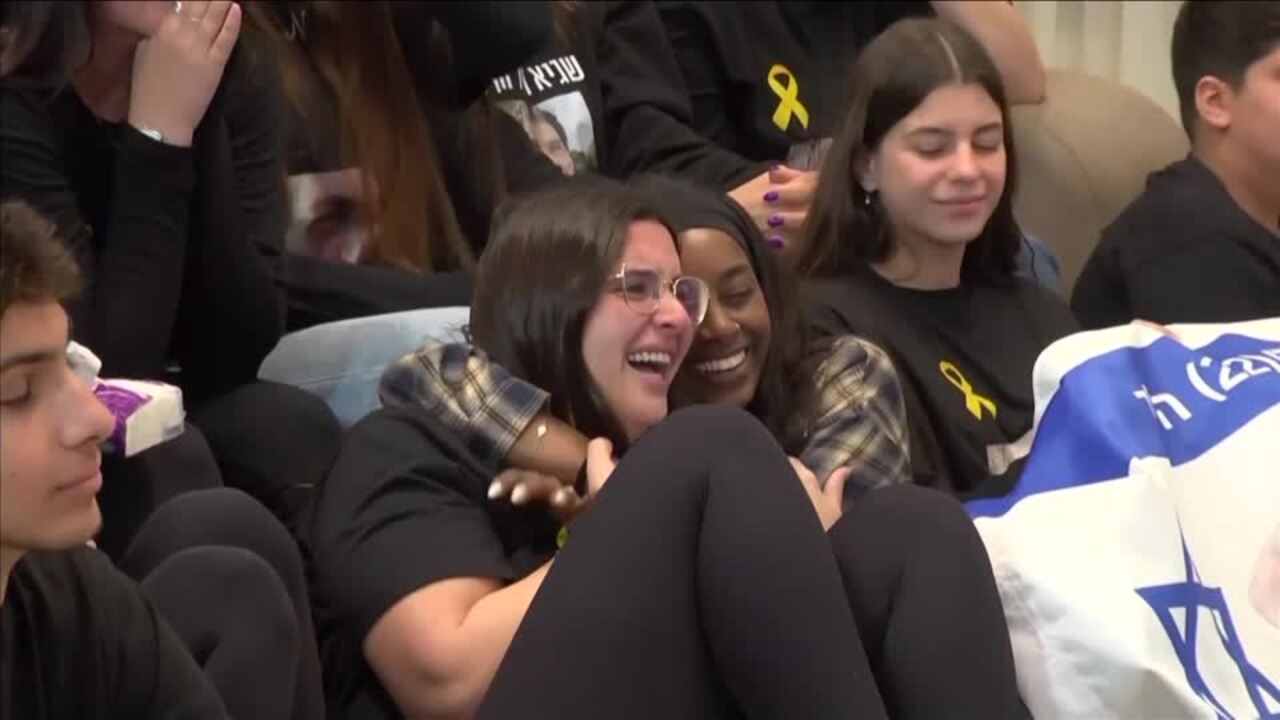
The threat prompted Mr Trump to warn Hamas to release all of the hostages on Saturday, or else the deal would be cancelled and he would “let hell break out’’.
Israeli Prime Minister Benjamin Netanyahu threatened on Tuesday that Israel would resume intense fighting if the hostages weren’t freed on Saturday.
Both Israel and Hamas have accused each other of violating the terms of the truce, though this week’s dispute marked the most serious threat to the pact since it entered into force on January 19. Mediators said tensions eased after aid deliveries resumed on Thursday, with some tents entering the enclave and dozens of mobile homes lined up at the Rafah crossing between Egypt and Gaza.
Mediators remain concerned by the lack of discussion of the transition to the second phase of the deal, which would involve releasing all remaining hostages in exchange for a permanent end to the war. Those talks were meant to begin last week but have been delayed. The first phase is due to end March 1.
Under the terms of the four-week-old ceasefire, Hamas agreed to release 33 Israeli hostages during a six-week initial phase in exchange for Israel freeing some 1700 Palestinian prisoners. So far, 19 living hostages have been freed under the deal, including a 65-year-old American-Israeli man and several young women. Of those yet to return under the initial phase, Israel believes eight are dead.
Five Thai hostages were also released separately from the ceasefire deal.
Mediators say Israel wants to extend the first phase to bring more living hostages home quickly. The frail condition of recently released hostages has raised concerns about the health of those who remain in captivity, and Israel’s government is reluctant to give up the ability to return to fighting Hamas.
Israel’s war against Hamas was triggered by the Oct. 7 attacks, during which around 1200 people were killed and some 250 taken hostage. Palestinian health officials say more than 48,000 people have been killed in the ensuing conflict, without saying how many were combatants.
About 70 per cent of buildings in the Gaza Strip have been damaged or destroyed during Israel’s offensive, according to the United Nations. The roughly two million Palestinians who live in the enclave are in need of aid including food, medicine and shelter amid cold weather.
The Wall Street Journal


